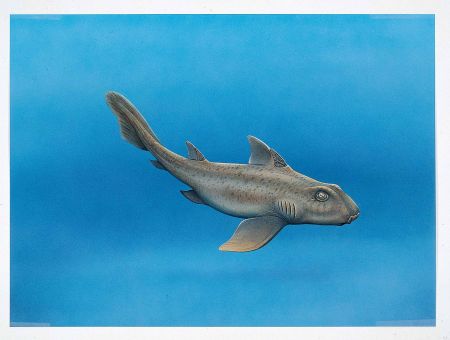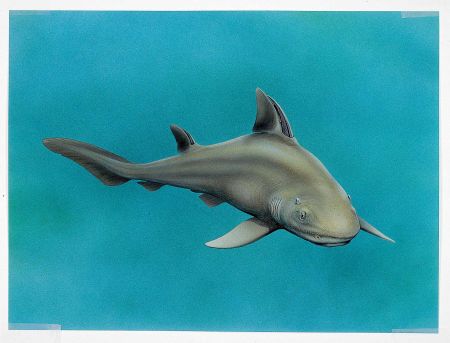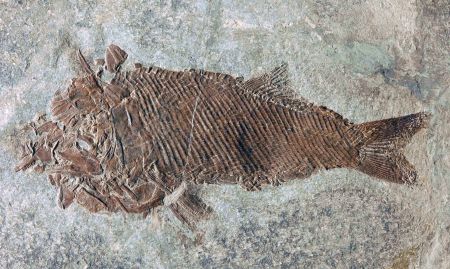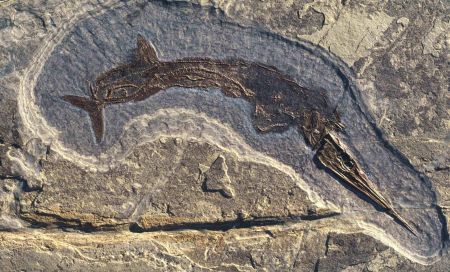Fishes
In addition to the famous reptiles, the deposits of Monte San Giorgio are especially rich in fish with approximately 50 species described so far. Many species are documented in different stages of growth and sometimes it is even possible to determine whether they were male or female. The fossils of Monte San Giorgio show the evolution of fish over an interval of several millions of years, including the time of the appearance of some groups from which modern-day fish originated.
Cartilaginous fishes (Chondrichthyes), such as sharks (Acronemus, Acrodus), have provided only a few finds that are interesting but normally incomplete (mainly teeth and bony fin spines). This is because their skeletons are otherwise made of materials that are poorly preserved in the process of fossilization.
Drawing of the primitive shark Acronemus, © PIMUZ / B. Scheffold 1991

Drawing of the shark Acrodus with its bony spines supporting front of the two dorsal fins, © PIMUZ / B. Scheffold 1991

The bony fishes (Osteichthyes) in contrast have provided many thousands of finds. The most fascinating forms include Ticinepomis and Holophagus, two coelacanthid fish representing the sarcopterygians (lobe-finned fish), and related to the modern form Latimeria, a “living fossil” present in the Indian Ocean.
The best-represented group is that of the actinopterygians (ray-finned fishes). Among the more modest-sized fishes (3-10 cm) we find, for example, Habroichthys, Prohalecites, Peltopleurus, Peripeltopleurus, and Pholidopleurus, which most likely fed on plankton and small organisms along the coast. Ticinolepis, Colobodus, and Crenilepis were larger (up to 80 cm) and equipped with robust dentition. Bigger still fish have also been found, such as Birgeria (up to 120 cm), a broad, strong fish that swam in the open sea, and Saurichthys, a fast predator similar in shape to today’s pike and barracuda. Some specimens of Saurichthys contain embryos and show that fish of this genus gave birth to their young instead of laying eggs, as is more frequently the case.
Ticinolepis, 18 cm (Meride Limestone) © MCSN, photo R. Stockar

Eosemiotus, 6 cm (Meride Limestone), © MCSN, photo R. Stockar

Saurichthys with embryos, 30 cm (Meride Limestone), © MCSN, photo R. Stockar





